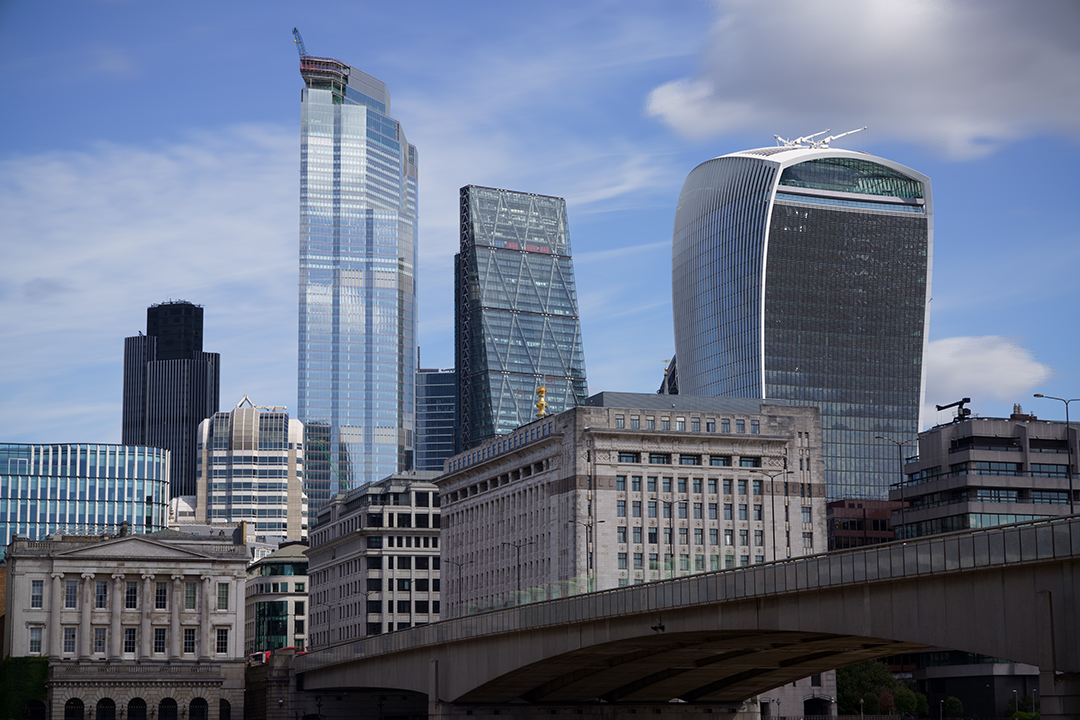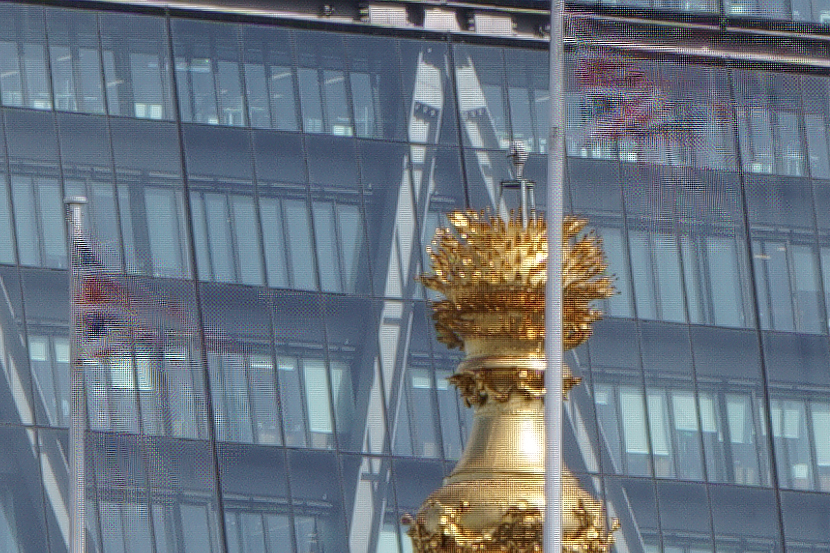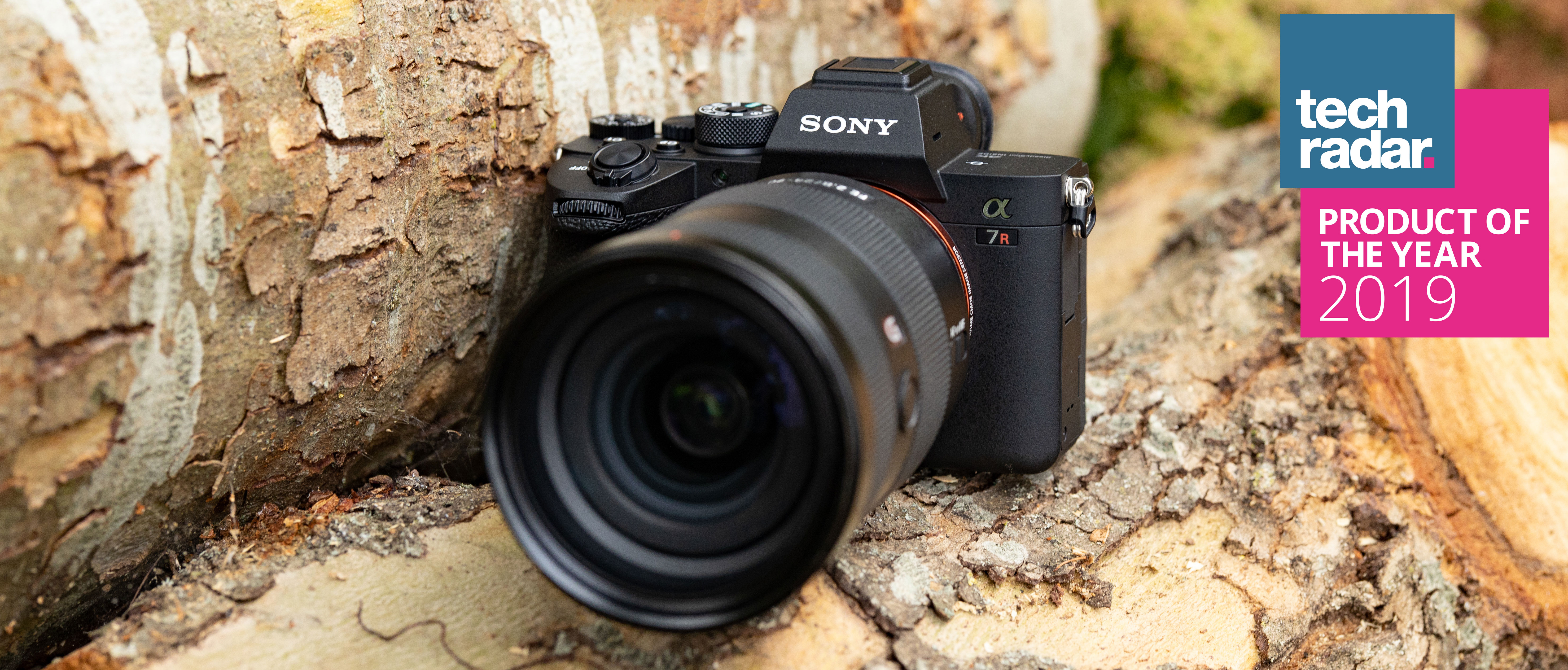Why you can trust TechRadar
Performance
- 5.76 million-dot EVF is high in contrast
- Touchscreen works well, though control is a little limited
- Good buffer depth and semi-responsive while writing images
At least at the time of writing, the Sony A7R IV is the latest camera to sport a 5.76 million-dot electronic viewfinder, following the likes of the Panasonic S1R and S1, and the Fujifilm GFX 100, rather than the 3.69 million-dot viewfinders seen on other rivals.
It's bright and sharp, and relatively high in contrast next to some more neutral finders found on its peers. It displays details well, although it appears to be a little more troubled by aliasing artifacts than some others at default settings; this appears to be rectified by switching the Display Quality to High, although this does come at the expense of battery life.
The LCD screen below it performs well, and responds to light presses, taps and swipes. It works particularly well during video recording, where tapping the screen allows for smooth focus transitions.
The fact that you can use the touchscreen to adjust the focus point when using the viewfinder is particularly helpful to left-eye shooters, who may find their nose is in the way of comfortable multi-selector operation. Touchscreen functionality isn't quite as fleshed out as on other models, with neither the main menu nor Fn control adjustable in this way, but between the Multi Selector and the menu pad dial beneath it, changes are relatively easy to make anyway.
The fact that you can use the touchscreen to adjust the focus point when using the viewfinder is particularly helpful to left-eye shooters, who may find their nose is in the way of comfortable Multi Selector operation
The fact that the screen has 1.44 million dots doesn't seem to place it at any noticeable disadvantage to other models that sport 2.1 million-dot screens, such as the Nikon Z7 and Panasonic S1R, as clarity is still very good. It's a shame, though, that the A7R IV doesn't match those models in upping its size to 3.2 inches, as the difference between the two sizes is noticeable.
With the fastest memory card we could get our hands on, we managed the promised 68 raw frames when capturing images at 10fps. The fact that autofocus works during this burst is also impressive, although it can get lost or distracted on occasion.
It does take a while for the buffer to fully clear this number of images, but then these are fairly chunky files, so this isn't unexpected. The camera is still operational while this is happening, but only up to a point; you can change some settings but not others.
A couple of things we noticed on occasion were a slightly sluggish start-up, and a slight disconnect between changing settings on the camera and the camera actually registering them. These were only slight – but they were constant.
Image quality
- Plenty of detail in images
- Excellent video quality but some rolling shutter
- Pixel Shift Multi Shooting impresses but there's no Motion Correction
Colors are certainly very nice out of the camera, and the wealth of Creative Styles allow you to either choose an appropriate setting without fuss, or create your own with only a little more fuss. It's a shame there's no post-capture raw processing option to let you make adjustments to these later on, but the scope of pre-capture processing does take the sting out a little.
One thing we noticed on more than one occasion were slight auto white balance inaccuracies between images. This would typically happen when the main subject filled a slightly different proportion of the frame to a previous image, but the shift between warmer and cooler tones was marked. The A7R IV's metering system proves to be far more reliable, though, doing well in balanced conditions but also with trickier scenes, such as when dealing with backlighting, or large brighter areas such as skies.

Click here for the full-size image

Click here for the full-size image

Click here for the full-size image

Click here for the full-size image

Click here for the full-size image

Click here for the full-size image
The A7R IV is certainly capable of resolving an excellent level of detail, particularly when you're using a tripod, or when it's otherwise completely static. You do need to be careful with shutter speed and SteadyShot settings, particularly when shooting close to subjects, as you may find a very slight loss of crispness here and there when viewing images at full size. If you rely on Auto ISO and any mode where the camera dictates the shutter speed – aperture priority, for example – it's worth adjusting the minimum shutter speed to be faster than usual through the ISO settings option.
On the subject of ISO, the camera does well to keep image noise minimal at the lower end of the ISO range, although you will see it creep into images sooner than on other cameras when processing images with respect to exposure, lifting shadow details and so on. There's a fair helping of noise by the time you get to ISO6400, which is perhaps expected when you consider just how populated the sensor is, although you won't see this as readily when examining images at more modest viewing sizes.
Pixel Shift Multi Shooting
Pixel Shift Multi Shooting is one of the A7R IV's highlight features, and with the promise of 240MP images it's something that those capturing more sedate scenes will no doubt be calling on. These images are not processed in-camera to produce a single file; instead you have the option of capturing four or 16 frames, before processing them using Sony's Imaging Edge Viewer software. File size will depend on what it is you've captured, and how many images you're combining, but our 16-shot image resulted in a TIFF file measuring a hefty 689MB.


Sadly, the file is far too large to be uploaded here, and such sizes are likely to slow down even more modern machines when it comes to processing, but the level of detail is immense. As with similar features on other cameras that work in this way, the very slight texture that's a by-product of the merging process means images aren't quite as flexible for further processing, but you can at least make adjustments before they're combined. Another thing to bear in mind is that, should anything move in between frames, this will be rendered much like the flags in the second image above – so you really want to be shooting completely static subjects for the best results.
Video quality is excellent, as we've come to expect from modern Sony cameras. Detail is nice and crisp and motion is natural, with no obvious artifacts. On top of that, the camera's focusing capabilities, combined with the touch functionality through the LCD screen, means you can easily focus and refocus during recording, with smooth but brisk performance. The only thing that might irk some is that, in its default 4K mode – i.e., using the full frame rather than the Super 35mm crop – some rolling shutter is evident when panning a scene.
In summary, the Sony A7R IV is capable of producing highly detailed images with good exposure, low noise and pleasing colors. You won't quite have the same scope for manipulating files with regards to noise and dynamic range as you might with cameras that have far less populated sensors, but that's the trade-off for such detailed files.
Current page: Performance and image quality
Prev Page Build, handling and AF Next Page Verdict and competition